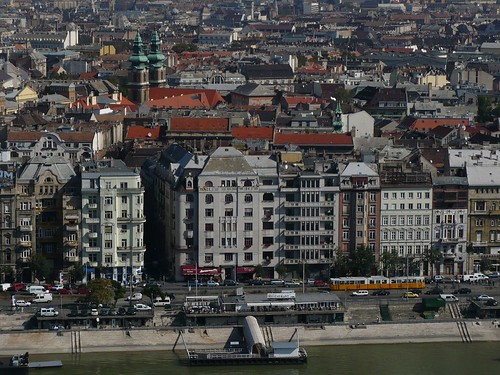Thursday, January 10, 2008
Seattle Streetcar Network
Tuesday, January 8, 2008
China: 270 KM of Subway Under Construction Simultaneously
Monday, January 7, 2008
The First Carbon Credits for Rail
I do know that folks in Portland and New York city are looking for ways to capture carbon credits. This might be a better way to start than going after the amount of tailpipe emissions saved by people moving from cars to transit which is often hard to figure out, but should be done eventually. I wonder how hard it would be to retrofit the New York City Subway Cars with this technology?
Sunday, January 6, 2008
Density is Relative


Saturday, January 5, 2008
Giving Employees a Bonus by Charging for Parking
Thursday, January 3, 2008
Subsidizing Suburban Metro Riders
Wednesday, January 2, 2008
Corzine Says Invest Near Transit
In the final days of the lame-duck legislative session, Gov. Jon Corzine is pushing a bill to give tax credits of up to $75 million to companies that build or lease offices in urban centers within a half-mile of a transit station.
The measure to create "urban transit hubs" will have simultaneous hearings today in the Senate Budget and Assembly Appropriations committees. The seven-page bill, introduced two weeks ago, is expected to be voted on in both chambers Monday, the last day of the session.
"We're excited about the concept and we're really looking forward to answering questions the Senate and Assembly might have about it," said Gary Rose, chief of the Governor's Office of Economic Growth.
The bill is meant to expand on the idea of transit villages -- initiatives to curb urban sprawl by encouraging residential development in urban areas near mass transit -- and apply it to the corporate world. It would offer tax credits as an inducement to invest in offices in struggling cities rather than far-flung suburbs.
The Sierra Club isn't so happy with the idea and we always see folks that are skeptical of tax credits. Perhaps if the suburbs had to pay their fair share of infrastructure instead of the usual road freeloading, we wouldn't need incentives to lure companies to cities or to build more urban headquarters.
Home Values and Commuting Costs
Location, location, location. Johan von Thunen did not coin that adage on what determines real estate values. But von Thunen's explanations of the relationships between location, transport costs and product prices remain relevant 180 years after he wrote them.
They help explain, for example, why development reportedly is stalling in some distant Twin Cities suburbs while home values in some St. Paul and Minneapolis neighborhoods are holding steady. Not bad for an old German farmer.
...Von Thunen also examined how a cheap transportation corridor affects property values. Suppose there is a canal or placid stream. One can load tons of rye onto a barge and move it to market much cheaper than with a wagon. Land prices are higher along the watercourse than elsewhere because produce transport costs are lower.
Ditto for the Twin Cities right now. Property prices have increased along the Hiawatha light rail line. More people want to live where getting to work is relatively cheap and convenient. In response to rising rental demand along the line, developers build apartments and condos. Neighborhood retail businesses spring up to serve the new residents.
The Central Corridor light-rail line is seeing similar activity, even though construction has not yet started. Developers are turning old commercial buildings into condos even though the buyers will have to depend on the No. 16 bus instead of snazzy light rail trains for years yet.
And yes, the same is true for communities along the planned Northstar commuter rail line. There is increased interest in buying property near planned stations.
Von Thunen predicted it all. The only difference is that commuters have replaced rye and the real estate is houses and apartments rather than sandy north German fields, woodlots and pastures.
Tuesday, January 1, 2008
Growing Up and Walking
So when I read this quote, it made me understand how meaningful it is to walk. The recently assassinated former prime minister of Pakistan, Benazir Bhutto, had this to say about being sheltered and walking to school.
So sheltered was Benazir's life that, at 16, she was completely unprepared for life at Radcliffe College, Harvard University."I cried and cried and cried because I had never walked to classes in my life before," she once told an interviewer. "I'd always been driven to school in a car and picked up in a car, and here I had to walk and walk and walk. It was cold, bitterly cold, and I hated it ... but it forced me to grow up. "
Perhaps some walking would make some folks grow up when it comes to the discussion on walkability versus autocentricity. My family is all about walking. When I lived in Bakersfield, and even in Texas, I walked and biked to school. It made me a little more aware of direction, and perhaps a little more of an explorer. It also builds a bit of independence. Anyone want to share any stories of walking to school as a kid?
